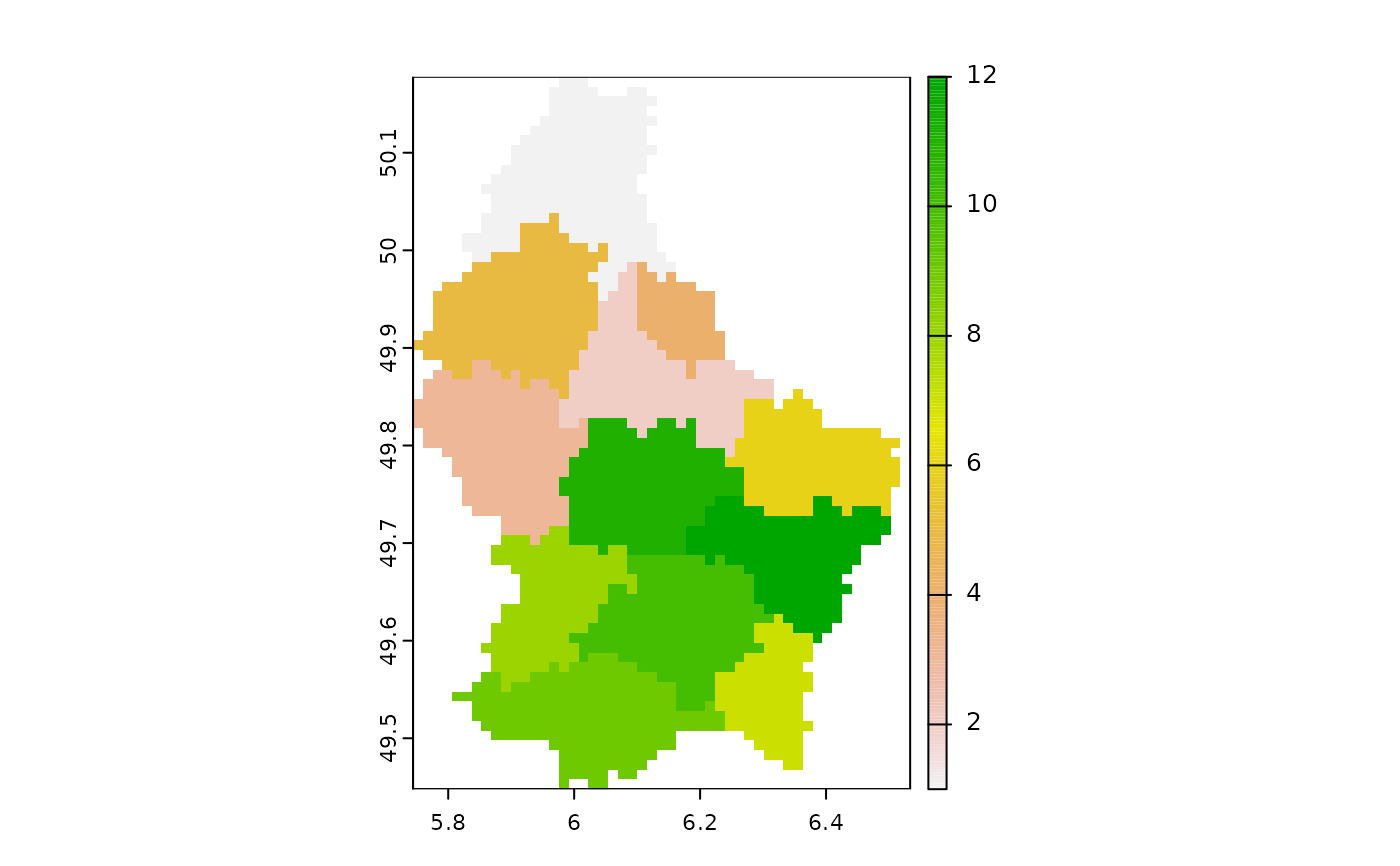This function provides an interface mirroring that of the GDAL
command-line app gdal_rasterize. For a description of the
utility and the arguments that it takes, see the documentation at
https://gdal.org/programs/gdal_rasterize.html.
Usage
gdal_rasterize(
src_datasource,
dst_filename,
...,
b,
i,
at,
burn,
a,
threeD,
add,
l,
where,
sql,
dialect,
of,
a_srs,
to,
co,
a_nodata,
init,
te,
tr,
tap,
ts,
ot,
optim,
q,
config_options = character(0),
dryrun = FALSE
)Arguments
- src_datasource
Character. Path to a GDAL-supported readable datasource.
- dst_filename
Character. Path to a GDAL-supported output file.
- ...
Here, a placeholder argument that forces users to supply exact names of all subsequent formal arguments.
- b, i, at, burn, a, threeD, add, l, where, sql, dialect, of
See the GDAL project's gdal_rasterize documentation for details.
- a_srs, to, co, a_nodata, init, te, tr, tap, ts, ot, optim, q
See the GDAL project's gdal_rasterize documentation for details.
- config_options
A named character vector with GDAL config options, of the form
c(option1=value1, option2=value2). (See here for a complete list of supported config options.)- dryrun
Logical (default
FALSE). IfTRUE, instead of executing the requested call to GDAL, the function will print the command-line call that would produce the equivalent output.
Examples
# \donttest{
if(require(terra)) {
## Prepare file paths of example shapefile and template raster file
vect_file <- system.file("ex/lux.shp", package = "terra")
td <- tempdir()
rast_file <- file.path(td, "lux_rast.tif")
## Construct and save an appropriately sized 'empty' raster
LUX <- vect(vect_file)
lonlatratio <- 1 / cospi(mean(geom(LUX)[, "y"]) / 180)
rr <- rast(ext(LUX),
resolution = c(lonlatratio * 0.01, 0.01),
crs = crs(LUX), vals = NA)
## Note: this next line warns that raster is empty
writeRaster(rr, filename = rast_file, overwrite = TRUE)
## Rasterize polygon using empty raster and check that it worked
gdal_rasterize(vect_file, rast_file, a = "ID_2")
plot(rast(rast_file))
}
 # }
# }